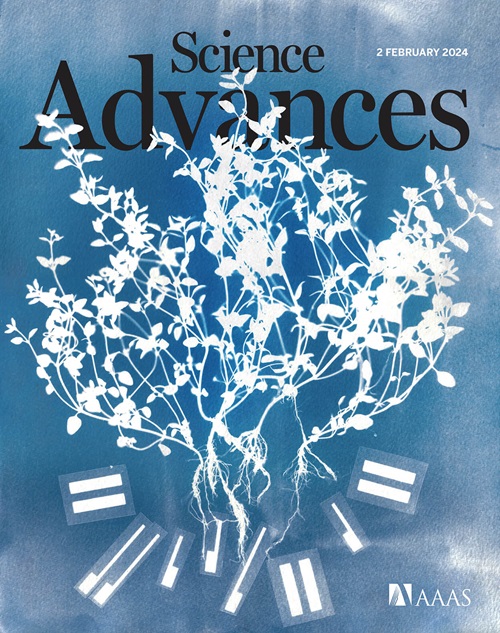A dyad of human-specific NBPF14 and NOTCH2NLB orchestrates cortical progenitor abundance crucial for human neocortex expansion
IF 11.7
1区 综合性期刊
Q1 MULTIDISCIPLINARY SCIENCES
引用次数: 0
Abstract
We determined the roles of two coevolved and coexpressed human-specific genes, NBPF14 and NOTCH2NLB, on the abundance of the cortical progenitors that underlie the evolutionary expansion of the neocortex, the seat of higher cognitive abilities in humans. Using automated microinjection into apical progenitors (APs) of embryonic mouse neocortex and electroporation of APs in chimpanzee cerebral organoids, we show that NBPF14 promotes the delamination of AP progeny, by promoting oblique cleavage plane orientation during AP division, leading to increased abundance of the key basal progenitor type, basal radial glia. In contrast, NOTCH2NLB promotes AP proliferation, leading to expansion of the AP pool. When expressed together, NBPF14 and NOTCH2NLB exert coordinated effects, resulting in expansion of basal progenitors while maintaining self-renewal of APs. Hence, these two human-specific genes orchestrate the behavior of APs, and the lineages of their progeny, in a manner essential for the evolutionary expansion of the human neocortex.

求助全文
约1分钟内获得全文
求助全文
来源期刊

Science Advances
综合性期刊-综合性期刊
CiteScore
21.40
自引率
1.50%
发文量
1937
审稿时长
29 weeks
期刊介绍:
Science Advances, an open-access journal by AAAS, publishes impactful research in diverse scientific areas. It aims for fair, fast, and expert peer review, providing freely accessible research to readers. Led by distinguished scientists, the journal supports AAAS's mission by extending Science magazine's capacity to identify and promote significant advances. Evolving digital publishing technologies play a crucial role in advancing AAAS's global mission for science communication and benefitting humankind.
 求助内容:
求助内容: 应助结果提醒方式:
应助结果提醒方式:


